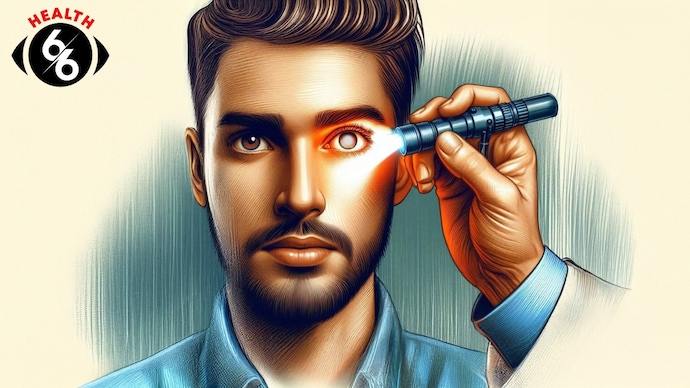Cataracts amidst the major causes of blindness: Simple eye check can stop it
Glaucoma, a chronic eye disease, gradually damages the optic nerve, showing without any symptoms, but gradually leading to vision loss and even blindness, if left untreated. About 90% of glucoma cases in India go unknowingly.

Glucoma is becoming a major public health concern in India, affected by over 12 million people.
This chronic eye disease gradually damages the optic nerve, without showing any symptoms, but gradually leads to loss and even blindness, if left untreated.
Doctors said that the fact that about 90% of glucoma cases in India go unknowingly, mainly due to lack of awareness, doctors have said.
Studies suggest that Asia will see a significant increase in cases of glucoma, with an estimated 27.8 million additional cases by 2040. India and China are expected to be the most affected.
In India alone, blindness related to glaucoma affects about 1.2 million people, which is responsible for 5.5% of all the nationwide cases of blindness. The disease is more common in over 40 adults, which affects about 2.7% to 4.3% of the elderly population.
One of the biggest challenges in the treatment of glaucoma is its silent progress. Many people do not realize that they have disease because it is not a cause of immediate vision problems.
As long as a person notices vision loss, significant loss has already been done. This is why regular eye examination is important.
All about glaucoma
Glaucoma is an eye disease that damages the nerve connecting the eye to the brain, often due to high eye pressure. This can cause vision loss when untreated. It usually has no initial symptoms, so regular eye checkups are important. Treatment includes eye drops, medication or surgery to protect vision.
There is a natural pressure in the eye, such as water filled balloons, usually between 11 to 21 mm Hg. This pressure comes from a fluid called aquatic humor, which is constantly made and dried. If this balance is disturbed, it creates pressure, damages nerve fibers and affects vision.
Open angle cataract Silent is the old variety. There is no symptom in the initial stages. It is only seen during an eye test. Later, it can be the result of feelings of inability to see some areas in the area of the eye and around, headache, spectacle number or some areas of vision.
Narrow angle Intense pain, redness, headache or colored rings around the light bulbs can be seen. These symptoms are extended during the evening or in dim light because the pupil is diluted, causing exhaust channels for fluid and high pressure inside the eye.
Secondary glaucoma Various reasons such as injury, swelling, eye tumors, bleeding, or even steroids can be caused by various reasons.
Congenital glaucoma There is a situation where exit channels are poorly formed since birth. Due to high pressure, the cornea becomes opaque, and the eye can gradually become large. The child can complain of low vision, glow, water or increased eyes. It should be treated immediately.
Who is at risk?
While the exact cause of glaucoma is not known, many risk factories are associated with eye disease.
- People who have diabetes
- People who wear glasses due to myopia/hypermatropia
- People who consume steroids
- Family history of glaucoma
- People who have thyroid diseases
- Other eye diseases such as uvitis, vitarus bleeding, or any major eye surgery.
- Eye injury
It is important to find out early
Nathradhama Super Specialty Eye Hospital, a senior advisor and glaucoma expert at Dr. Asha MS highlighted the importance of early diagnosis. Patients often do not know that they have glucoma until significant damage has been done. Many people question the need for testing when their vision feels fine. Most cases are detected during routine eye check-up. This is why glaucoma is called ‘silent thief of vision’, “she says.
Routine Eye exams can help detect glucoma in an early stage, which allow timely medical intervention. The only controlgic risk factor for glaucoma is intraocular pressure (IOP).
If it is detected early, treatment can help slow down or help prevent further damage.
Older adults, especially living alone, often struggled to use healthcare, making glucoma diagnosis even more difficult.
Dr. Asha, especially emphasized the need for increased awareness campaigns for more than 40 people. People with family history of glaucoma, diabetes or high myopia are at high risk and should undergo regular screenings.
Regular screening and community education can help reduce the increased burden of glucoma and protect millions from vision loss.
By making people more aware and ensuring easy access to eye tests, India can take important steps in preventing blindness related to glaucoma.







